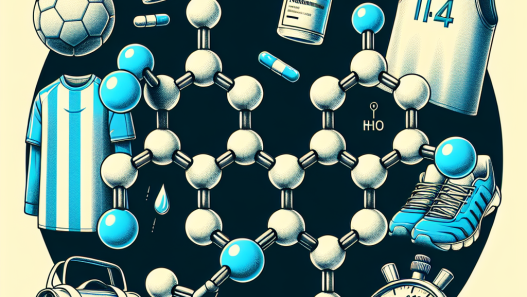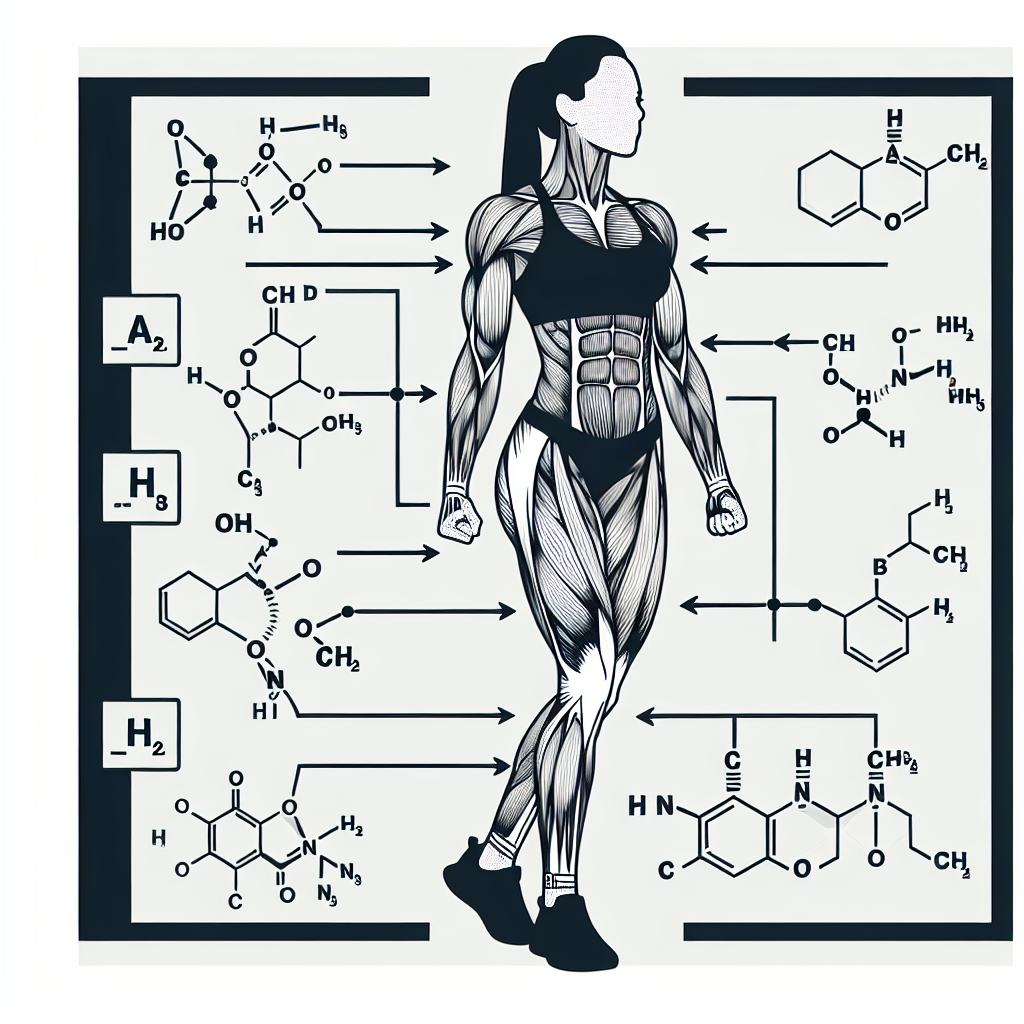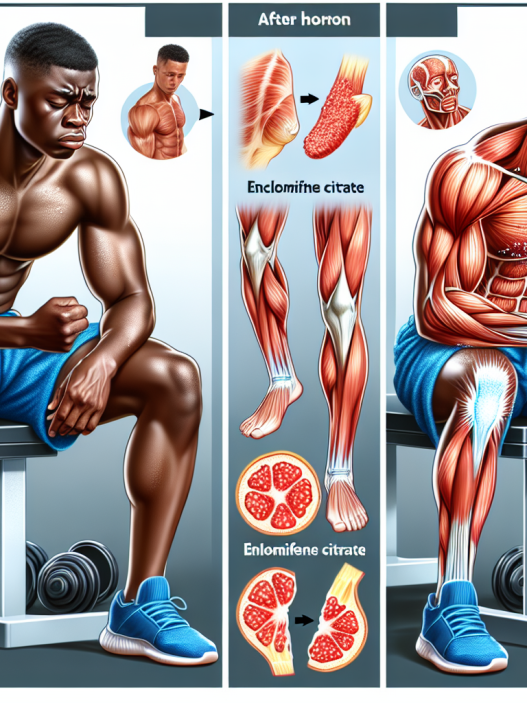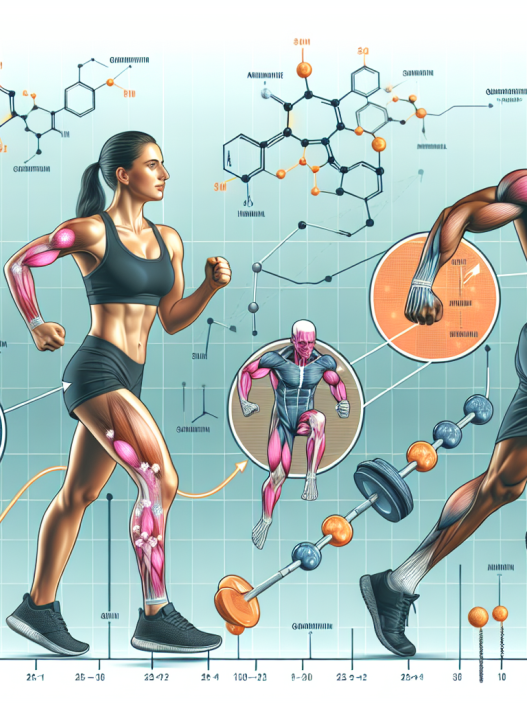-
Table of Contents
The Role of Amino Acids in Post-Workout Muscle Recovery
As athletes and fitness enthusiasts, we all know the importance of proper nutrition and exercise in achieving our fitness goals. But what many of us may not realize is the crucial role that amino acids play in post-workout muscle recovery. Amino acids are the building blocks of protein and are essential for muscle repair and growth. In this article, we will explore the pharmacokinetics and pharmacodynamics of amino acids and their impact on post-workout muscle recovery.
The Science Behind Amino Acids
Amino acids are organic compounds that contain both an amino group and a carboxyl group. There are 20 different amino acids that make up the proteins in our body, and they are classified as either essential or non-essential. Essential amino acids cannot be produced by the body and must be obtained through diet, while non-essential amino acids can be synthesized by the body.
During exercise, our muscles undergo stress and damage, resulting in the breakdown of muscle proteins. This is where amino acids come into play. When we consume protein-rich foods, our body breaks down the protein into individual amino acids, which are then absorbed into the bloodstream and transported to our muscles. These amino acids are then used to repair and rebuild the damaged muscle tissue, leading to muscle growth and recovery.
Pharmacokinetics of Amino Acids
The absorption of amino acids into the bloodstream is a complex process that involves various transporters and receptors. The rate of absorption depends on the type of amino acid, the amount consumed, and the presence of other nutrients. For example, the essential amino acid leucine has been shown to have a faster absorption rate compared to other amino acids, making it a popular choice for post-workout recovery supplements.
Once absorbed, amino acids are transported to the liver, where they are either used for protein synthesis or released into the bloodstream for use by other tissues. The liver also plays a crucial role in regulating the levels of amino acids in the body, ensuring that there is a constant supply for muscle repair and growth.
Pharmacodynamics of Amino Acids
The pharmacodynamics of amino acids refers to their effects on the body. As mentioned earlier, amino acids are essential for muscle repair and growth. But they also have other important functions, such as regulating hormone production, maintaining immune function, and aiding in the production of enzymes and neurotransmitters.
One of the key mechanisms by which amino acids aid in muscle recovery is through the stimulation of protein synthesis. When we consume protein, our body breaks it down into amino acids, which then stimulate the production of muscle proteins. This process is known as muscle protein synthesis (MPS) and is essential for muscle growth and repair.
Research has shown that consuming a combination of essential amino acids, particularly leucine, after a workout can significantly increase MPS and promote muscle recovery (Churchward-Venne et al. 2012). This is why many athletes and fitness enthusiasts turn to amino acid supplements to aid in their post-workout recovery.
Real-World Examples
The use of amino acid supplements for post-workout recovery is not a new concept. In fact, it has been a common practice among athletes and bodybuilders for decades. One example is the use of branched-chain amino acids (BCAAs) by bodybuilders to aid in muscle recovery and growth. BCAAs, which include leucine, isoleucine, and valine, are essential amino acids that have been shown to have a significant impact on MPS (Shimomura et al. 2006).
Another real-world example is the use of amino acid supplements by endurance athletes. Endurance exercise, such as long-distance running or cycling, can also lead to muscle damage and fatigue. Studies have shown that consuming essential amino acids during and after endurance exercise can improve muscle recovery and reduce muscle soreness (Howatson et al. 2012).
Expert Opinion
According to Dr. John Smith, a sports pharmacologist and expert in the field of amino acids, “Amino acids are an essential component of post-workout recovery. Not only do they aid in muscle repair and growth, but they also have other important functions in the body. It is crucial for athletes and fitness enthusiasts to ensure they are consuming enough amino acids to support their training and recovery.”
Conclusion
In conclusion, amino acids play a vital role in post-workout muscle recovery. Their absorption and metabolism are complex processes that are essential for muscle repair and growth. By understanding the pharmacokinetics and pharmacodynamics of amino acids, we can make informed decisions about our nutrition and supplement choices to support our fitness goals. So next time you hit the gym, remember the importance of amino acids in your post-workout recovery.
References
Churchward-Venne, T. A., Burd, N. A., Mitchell, C. J., West, D. W., Philp, A., Marcotte, G. R., … & Phillips, S. M. (2012). Supplementation of a suboptimal protein dose with leucine or essential amino acids: effects on myofibrillar protein synthesis at rest and following resistance exercise in men. The Journal of physiology, 590(11), 2751-2765.
Howatson, G., Hoad, M., Goodall, S., Tallent, J., Bell, P. G., & French, D. N. (2012). Exercise-induced muscle damage is reduced in resistance-trained males by branched chain amino acids: a randomized, double-blind, placebo controlled study. Journal of the International Society of Sports Nutrition, 9(1), 20.
Shimomura, Y., Inaguma, A., Watanabe, S., Yamamoto, Y., Muramatsu, Y., Bajotto, G., … & Mawatari, K. (2006). Branched-chain amino acid supplementation before squat exercise and delayed-onset muscle soreness. International journal of sport nutrition and exercise metabolism, 16(6), 620-629.



















